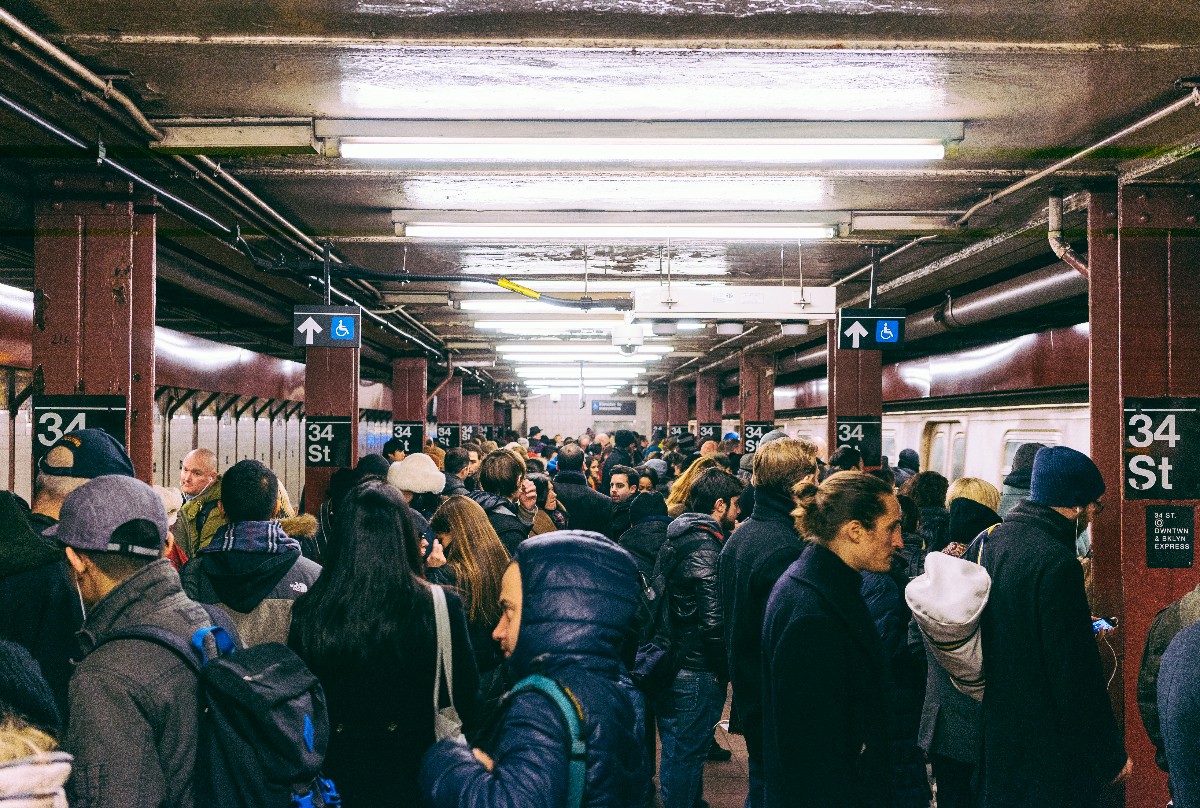 Photo Courtesy: Roman Kruglov on Flickr
Photo Courtesy: Roman Kruglov on Flickr
New York’s “Summer of Hell” is Symbol of Failing U.S. Infrastructure
New York City is one of the largest commuter hubs in the world, serving 5.7 million subway riders and another 700,000 commuter rail passengers entering Grand Central or Penn Station every day. The city has recently entered what is being called the “Summer of Hell,” the aftermath of Amtrak closing several lines into Penn station to conduct massive summer repairs. The result of this emergency overhaul is a 20% reduction in trains entering Penn Station from New Jersey and Long Island, diverting tens of thousands of people to Hoboken. Due to aging tracks at Penn Station causing two-train derailments over the span of three months, last minute shutdowns became necessary. These abrupt railway closures highlight commuters’ frustrations as already overcrowded transportation systems became inundated by increasing ridership on the remaining lines. This crumbling transportation infrastructure in New York is the perfect microcosm of a failing national infrastructure.
Infrastructure was once at the forefront of American public policy with works such as the Hoover Dam, the Los Angeles Aqueduct, and the Interstate Highway System. The state of U.S. infrastructure has steadily declined since. Today there are over 70,000 bridges in the United States declared as “structurally deficient.” In addition to questionable bridges, throughout the country there are crumbling roads, frequent airline delays, and train lines undergoing complete overhauls. The Washington D.C. Metro recently completed a series of extensive repairs that required periodic closures of entire lines. The disruption and delays in the D.C. area echo the same chaos found in New York’s “Summer of Hell.”
Our daily routines have integrated the inconveniences of aging infrastructure without much regard. At the most rudimentary level, the failures of U.S. infrastructure are daily annoyances that have become routine to most commuters. It looks like traffic congestion on the highways and slow-moving, delayed, or infrequent trains. It’s a shortage of airport runways and gates that makes U.S. air travel the most congested in the world. However, in the broader scope of U.S. infrastructure it becomes clear that there are more significant costs.
First, the current delays of trains and unnecessary congestion on highways directly detracts from American productivity and equates to a significant amount of money lost each fiscal year. Calculations done for the American Society of Civil Engineers evaluate that infrastructure deficiencies result in delays that cost $32 billion annually. If infrastructure investment continues at these insufficient levels, it will cost overall U.S. GDP $3.9 trillion and 2.5 million domestic jobs by 2025. The report estimates the average cost to American families in time lost due to traffic, delayed flights, and other infrastructure mishaps is $3,400 in disposable income per year. The undeniable connection between economic competitiveness and infrastructure adds enough gravitas to the issue that politicians should prioritize investment in infrastructure.
Additionally, a weak infrastructure dangerously hinders U.S. resiliency in times of emergency. Congested roads, trains and airways impedes the ability to quickly and efficiently evacuate areas at risk for extreme weather or under the threat of imminent attack. This sorry state of U.S. infrastructure also likely weakens the U.S.’ international image. Once considered the leaders in infrastructure and transportation technology, we are falling behind emerging economic competitors such as China, India, and Brazil. This clear inability to support the most basic of transportation and commerce needs acts as a strong deterrent against foreign investment into the United States. It paints the country, and its economy, in a weak and unflattering light. It is difficult to promote a strong national image when roads, bridges, and subway systems are falling into states of disrepair.
Thus in order to bolster the U.S. economy and protect a strong international image, infrastructure needs to rise to the top of the political agenda. Infrastructure directly impacts our economy and resiliency, yet has remained secondary to other political concerns. The “Summer of Hell” for New Yorkers and D.C.’s persistent metro issues are warnings of what is to come without increased infrastructure investment. It is time that President Trump follow through on a campaign promise and enact his “$1 trillion infrastructure plan.” U.S. infrastructure is in desperate need of his “great national infrastructure program,” as it is considerably below the standards that the U.S. should be meeting as a leading world innovator.





